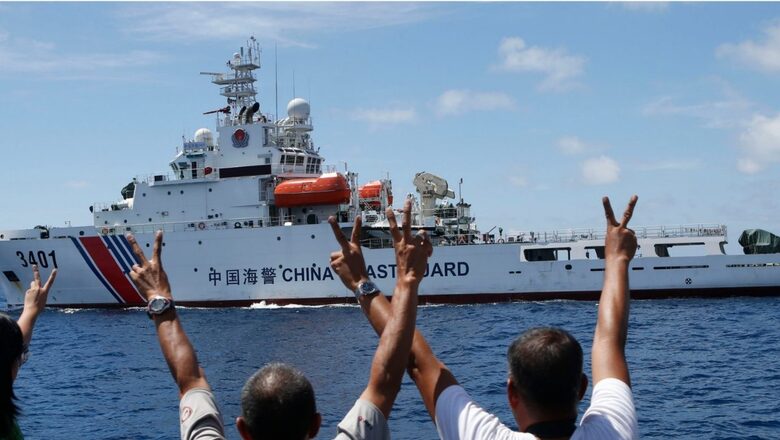
views
China and the Philippines said they have agreed to work on lowering tensions after a year of public and tense confrontations in the South China Sea between their ships that have raised concerns of armed engagement in the region.
China’s Ministry of Foreign Affairs said Thursday that the two sides agreed to continue to improve communication and use friendly negotiations to manage their differences at sea, “especially to manage well the situation at Ren’Ai reef.”
Ren’Ai reef is the Chinese name for what the Philippines call Ayungin Shoal and the U.S. calls the Second Thomas Shoal, the site of multiple confrontations between the two countries’ ships in recent months.
In November, Manila said that a Chinese coast guard ship and accompanying vessels conducted dangerous maneuvers and blasted a Philippine supply ship with a water cannon in disputed waters. China disputed the account, saying it acted appropriately.
China and the Philippines said they agreed to limit tensions at a meeting on the South China Sea on Wednesday in Shanghai, the eighth in a series that began in 2017.
“The two sides had frank and productive discussions to de-escalate the situation in the South China Sea and both sides agreed to calmly deal with incidents, if any, through diplomacy,” the Philippines’ Department of Foreign Affairs said in a statement Wednesday.
The territorial disputes in the South China Sea are widely seen as a potential flashpoint for armed conflict. Multiple countries have claimed waters in the South China Sea, including Brunei, Malaysia, Vietnam, Malaysia and China.
Whether efforts to lower tensions last is to be seen.
China is angry after Philippine President Ferdinand Marcos Jr. congratulated the winner of Taiwan’s recent presidential election on Monday. Taiwan, a self-ruled island claimed by China, chose a candidate from a party that considers Taiwan independent. China’s Foreign Ministry summoned the Philippine’s ambassador to lodge their complaints.
China objects to any official engagement with Taiwan’s government, viewing it as an acknowledgement of sovereignty.


















Comments
0 comment